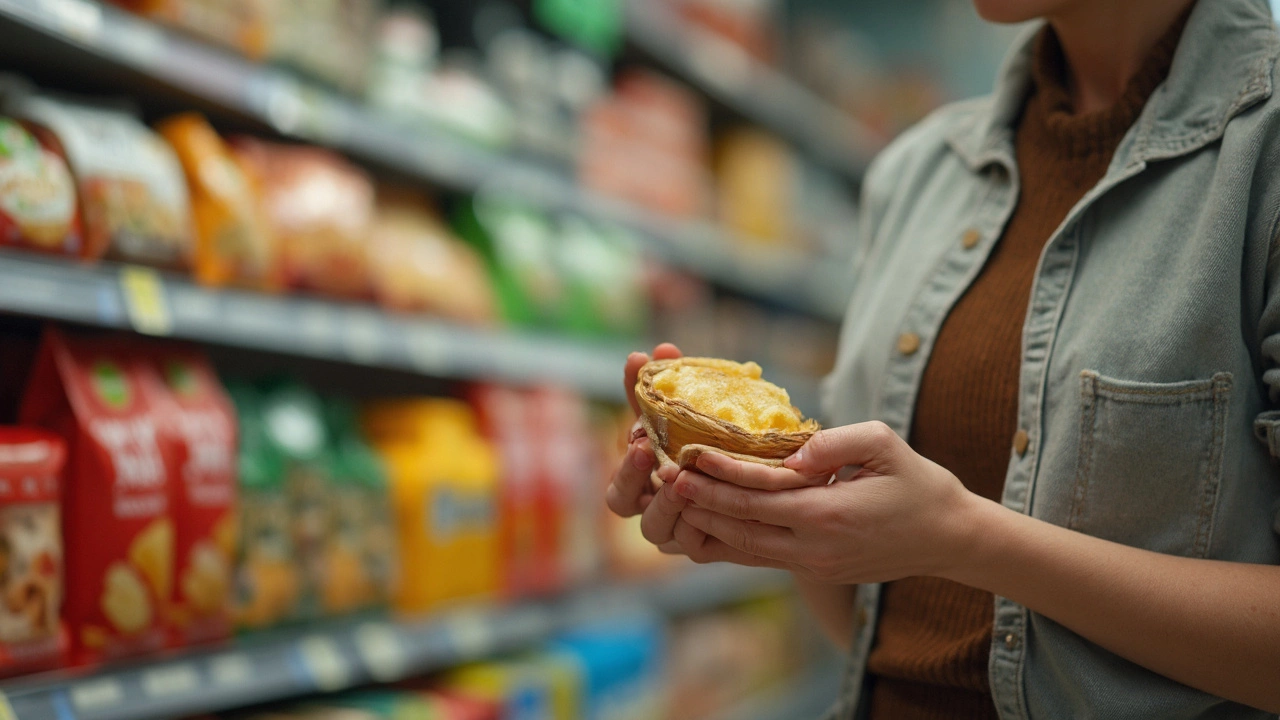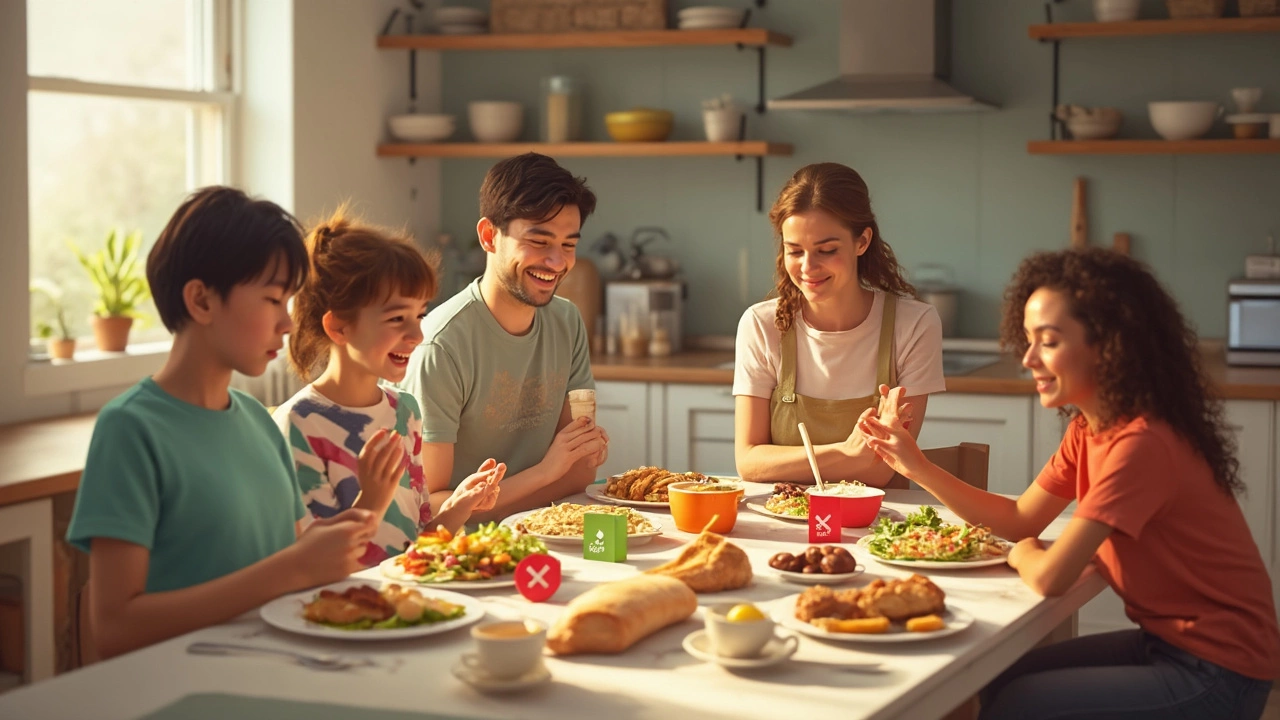It isn’t just bread that can play tricks if you’re trying to avoid gluten. Gluten has a knack for sneaking into places your average grocery shopper would never expect. Grab a loaf of sandwich bread for school lunches, sure. But what about that soy sauce in your stir fry? That fancy potato chip flavor you swore was safe? Even the humble candy bar sometimes hides gluten beneath its sweet surface. For anyone dodging gluten—because of celiac disease, an allergy, or simple sensitivity—these landmines aren’t just annoying, they can derail your entire day (or week) and leave you scrambling for answers. I learned this the hard way running behind my son Quentin with epi-pens and stomach soothers. Think you know what not to eat? You might be surprised. Let’s pull back the curtain on the not-so-obvious enemies in your kitchen.
The Biggest Gluten-Loaded Offenders
When people think “gluten,” most instinctively imagine the obvious: loaves of fresh bread dusted with flour, pillowy pizza crusts stuffed with cheese, golden pastries in a bakery. Sure, these are the poster children for what not to eat on a gluten-free diet. But bread is just the start of the story. The kingpins of gluten are wheat, barley, and rye, along with their lesser-known cousins: triticale, spelt, kamut, farro, and bulgur. They're all big on flavor, but double trouble for anyone gluten-sensitive. If you see any of these names on an ingredient list, put it down. Wheat lurks in bagels, cakes, muffins, wraps, croutons, breadcrumbs, battered foods, and even the “wheat starch” that's sometimes labeled ‘safe’ after special processing. Rye sneaks into classic deli rye bread, pumpernickel, and—this one gets people—some vodka brands. Barley is the soul of malt flavoring, so malt vinegar and malted milk balls are kryptonite for the gluten intolerant.
Pasta—yes, even in colors and shapes for kids—almost always relies on wheat. You’re dodging macaroni salads at cookouts and canned soups with noodles unless the label says 'gluten-free.' Don’t forget beer and many ales, which are brewed with barley or wheat. A lot of people overlook these. If you’re raising a gluten-free kiddo like Quentin, you’ll find pizza parties suddenly feel like minefields. Even burger buns, flour tortillas, and most pancake mixes (even the fluffy, “natural” ones) make the list. The rule: if you can squish it, roll it, or dust it with flour, question it.
Where Gluten Hides: The Sneaky Sources
It’s the hidden gluten that gets even the cautious types. Did you know soy sauce almost always includes wheat? Unless you see “tamari” or a dedicated gluten-free label, it’s off-limits. Even some brands of teriyaki sauce, salad dressings, and spice blends use wheat-based thickeners for texture or flavor. A friend once tossed breaded chicken tenders in her fryer—the same fryer used for “gluten-free” fries. Hello, cross contamination. Gluten jumps from pan to pan, fryer to fryer, with terrifying ease. Breadcrumbs, of course, don’t just live in meatloaf—they hide in veggie burgers, crab cakes, and your favorite frozen appetizers. Other sneaky suspects include imitation crab meat, malted milk shakes, and processed cheese spreads (some use wheat-based stabilizers to keep them smooth).
Canned soup? Watch for wheat flour as a thickener. Potato chips? The plain ones might be fine, but anything with “seasoning” or “flavor” in the title is fair game for barley or wheat-based flavors. Even some flavored rice mixes—crazy, right? And then you have things like licorice, which uses wheat flour to get that chewy texture. (Quentin learned the hard way during Halloween candy swaps.) Some instant oatmeal packets, energy bars, and even ice creams with cookie bits are off-limits. If you see “malt extract,” “malt syrup,” or “natural flavors” listed vaguely, you’re hunting for gluten. Even cosmetics like lipstick or toothpaste sometimes contain wheat-derived ingredients, so sensitive folks need to double-check what goes near their mouths.

Shopping Smarter: Label-Reading and Restaurant Survival
Here’s a hard-won fact: “gluten-free” isn’t just a wish, it’s a legal label in much of the world. In the US and EU, it means the product contains less than 20 parts per million (ppm) of gluten. But you can’t just trust the claims. Read the ingredient list every time, especially if you’re shopping for kids with celiac disease or severe allergies. Gluten-free bread can taste radically different from ‘gluten bread’—some are crumbly, others dense. Don’t be afraid to try a few brands until you find one your kid will actually eat in a sandwich — and if you’re trying to find a good pizza crust, double down on patience. Check for phrases like “manufactured in a facility that processes wheat” if your sensitivity is severe, because tiny traces can still trigger bad reactions in some.
Restaurants? Double-check everything. Even a french fry technically made from potatoes can be unsafe if it shares a fryer with onion rings or chicken nuggets. Don’t be shy. I’ve asked waiters how they prep their fries so many times Quentin rolls his eyes from across the table. Tell staff you have a gluten issue, not just “a preference.” Be wary of gravies, sauces, or soups unless they’re made with cornstarch or gluten-free flours. (Pro tip: If your food comes with a crispy coating, battered, or fried, assume it involves gluten unless proven otherwise.) Ask for your meal to be cooked on a clean surface, and, if you’re bringing your own snacks, keep them separate from others’. Quick trick—bring your own salad dressing if you’re eating out. Even basic vinaigrettes sometimes use wheat-derived flavorings or thickeners.
Better Choices and Everyday Freedom Without Gluten
Here’s the twist—living gluten-free isn’t all about deprivation. You don’t have to eat cardboard. Plenty of naturally gluten-free foods are out there: brown rice, quinoa, corn, potatoes, legumes, buckwheat (despite the misleading name), and most dairy, meats, fruits, and veggies. Shopping the outside aisles of the grocery store, sticking to single-ingredient foods, is safer. When baking, experiment with almond flour, coconut flour, or store-bought gluten-free flour blends. Breakfast doesn’t have to be a struggle; eggs, smoothies, and oatmeal from certified gluten-free oats become go-tos. If you get snacky, popcorn or veggie sticks with homemade dips never disappoint. And there’s a whole world of gluten-free ethnic cuisines: Thai curries with rice, Mexican tacos in corn tortillas, Indian lentil dishes—you get the idea.
Keen on baking with your kids? Gluten-free flours behave differently, so getting the texture right might need more patience than your average ‘flour + eggs’ recipe. But it’s worth experimenting when the house smells of fresh cookies, and nobody feels left out. Most grocery stores have a special gluten-free section now. But always scan those labels. Some products try to make up for missing gluten with extra sugar or stabilizers—pick the ones with the simplest ingredients when you can. If you love eating out, apps like Find Me Gluten Free or allergen menus at major chains are a real gift. The key: don’t let gluten restrictions make food boring or social time stressful—just plan, ask questions, and keep those safe snacks handy. Quentin might complain about the “gluten-free” birthday cake, but a full, happy stomach always wins over a sick one.

